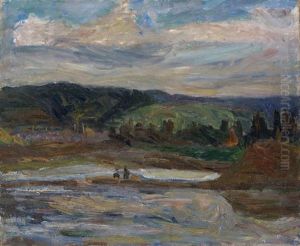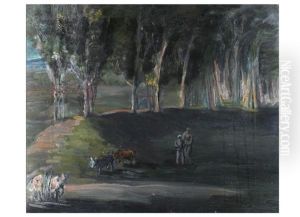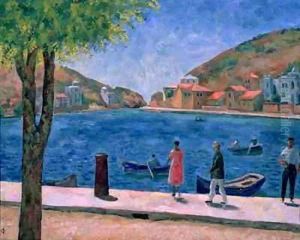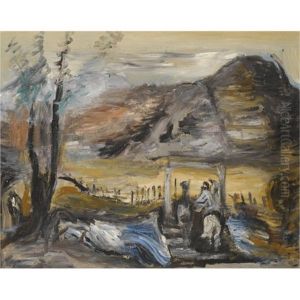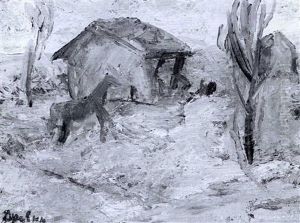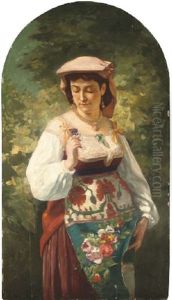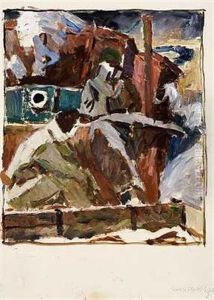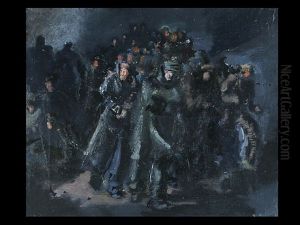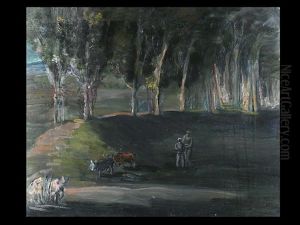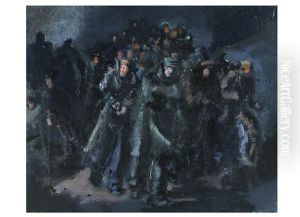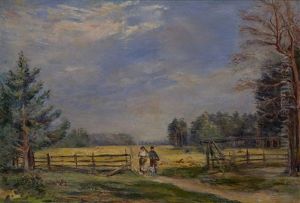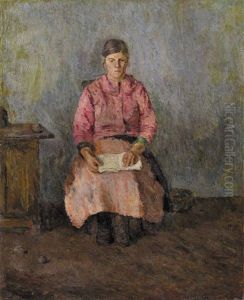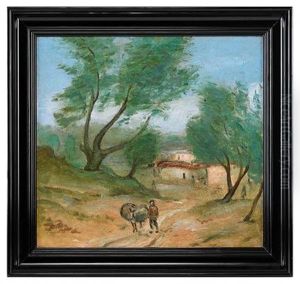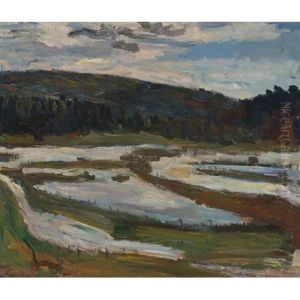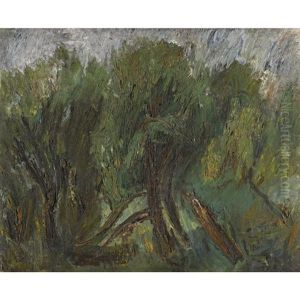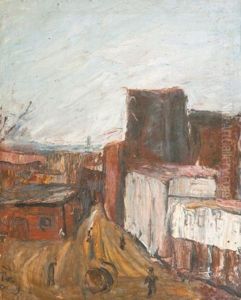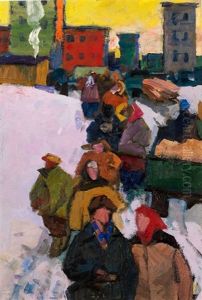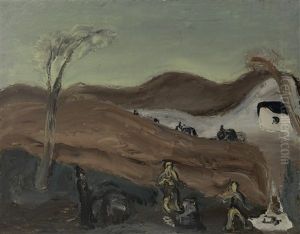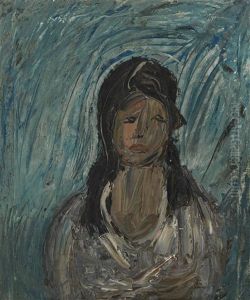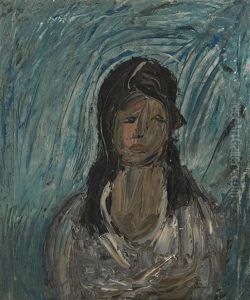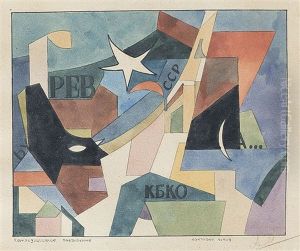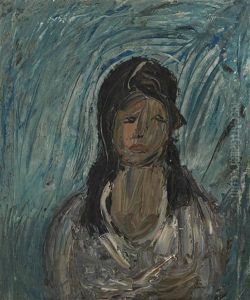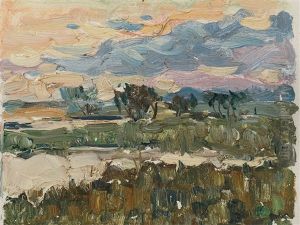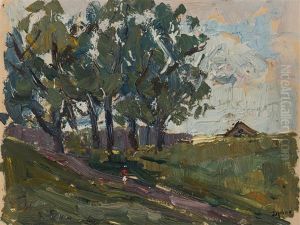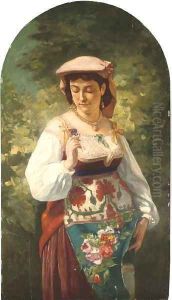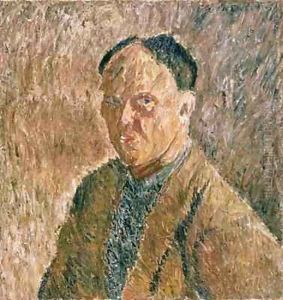Aleksandr Davidovic Drevin Paintings
Aleksandr Davidovic Drevin was a Latvian-born Russian painter associated with the avant-garde movement in art. Born on August 3, 1889, in Cēsis, which was then part of the Russian Empire and is now in Latvia, Drevin displayed an early interest in art. He pursued his passion for painting and eventually became an influential figure in Russian avant-garde circles.
Drevin studied at the Moscow School of Painting, Sculpture, and Architecture, where he was exposed to a variety of artistic styles and movements. His own work evolved over time, reflecting elements of Cubism and Futurism, as well as an affinity for the more simplified forms and expressive qualities of primitive art. Drevin was particularly adept at landscape painting, and many of his works showcase the Russian and Siberian wilderness, depicted with a bold and dynamic use of color and form.
In 1910, Drevin married fellow artist Nadezhda Udaltsova, and they became deeply involved with the Moscow avant-garde community. Drevin's circle of friends and colleagues included notable artists such as Kazimir Malevich, Lyubov Popova, and Alexander Rodchenko. He participated in several key exhibitions of Russian avant-garde art, contributing to the development and spread of the movement.
During the 1920s, Drevin's art continued to evolve, and he became interested in the idea of 'art into life,' a philosophy that sought to break down the barriers between art and everyday experience. This period saw him taking on roles as an art educator and organizer, participating in the educational initiatives of the Soviet state.
Tragically, Drevin's life and career came to a premature end when he was arrested during the Stalinist purges. He was accused of being a 'formalist' and an enemy of the state, charges that were often used to suppress independent artistic expression. Aleksandr Drevin was executed on February 26, 1938. Despite the tragic end to his life, Drevin's work remains an important part of the Russian avant-garde legacy, remembered for its innovative approach and its contribution to the development of modern art in Russia.
